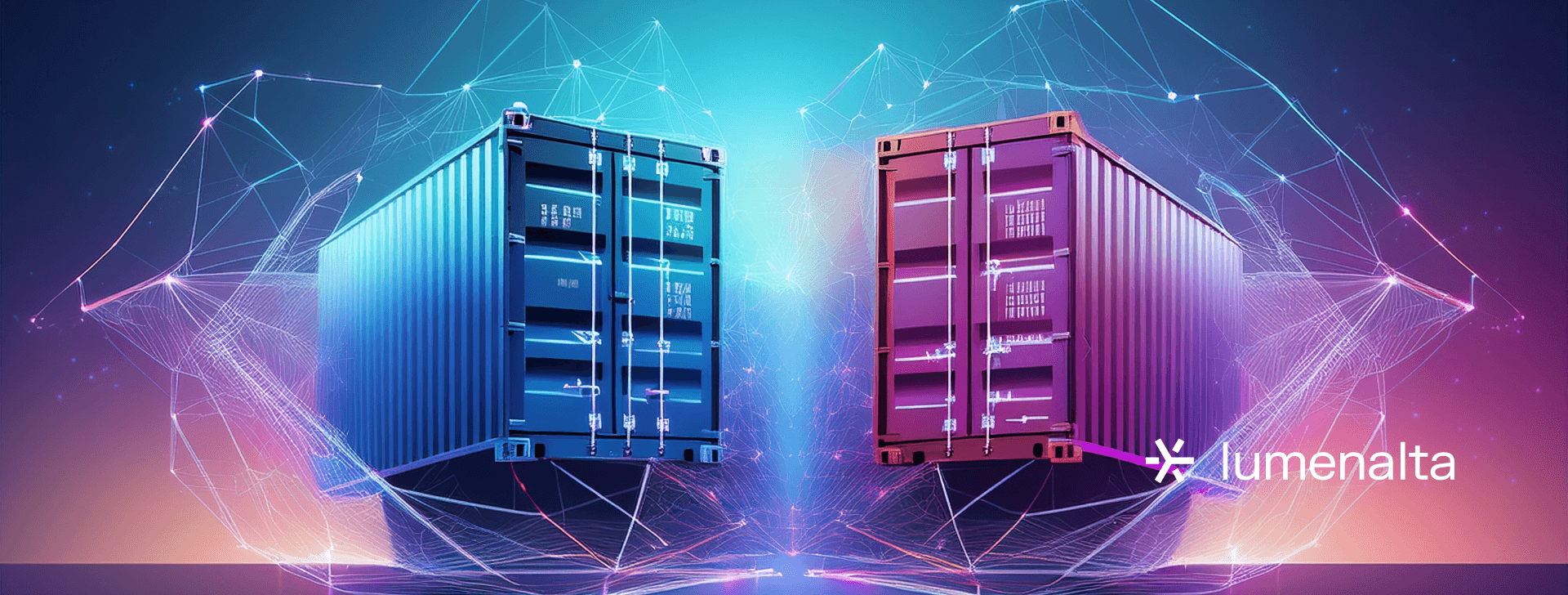

Understanding 3PL logistics
MAR. 15, 2025
7 Min Read
Many organizations consider 3PL logistics one of the most important strategies for scaling their supply chain operations.
This approach allows you to outsource shipping, warehousing, and related tasks, giving managers the freedom to focus on growth. Third-party providers bring specialized expertise in cost optimization, order accuracy, and real-time tracking, reducing inefficiencies that impact profit margins. A well-crafted partnership can open new avenues for delivering your goods faster and more reliably. Success in the market often hinges on agile distribution, timely deliveries, and robust data visibility. Implementing a 3PL strategy can lighten your operational load and help you adapt to emerging trends with minimal disruption. Many decision-makers appreciate the ability to adjust capacity without major investments in property or technology. The following content highlights how this model works, the essential components involved, and ways to optimize its benefits.
Key takeaways
- 1. 3PL logistics can reduce overhead, improve flexibility, and create cost-effective shipping strategies.
- 2. Warehousing, transportation, order fulfillment, inventory management, and returns are the core pillars of third-party arrangements.
- 3. 4PL logistics involves a single overseer who manages multiple third-party partners for broader control and accountability.
- 4. Well-defined performance metrics, regular performance reviews, and aligned goals protect service quality and profitability.
- 5. Technology integration, including a 3PL warehouse management system, leads to real-time data access and more efficient workflows.
What is 3PL logistics?
Third-party logistics (3PL) involves outsourcing a portion or all of a company's supply chain operations to a specialized provider. This arrangement typically includes warehousing, transportation, and related support services that facilitate product movement from manufacturers to end users. Many businesses rely on this approach because it can minimize overhead expenses and expand operational reach at the same time. 3PL in logistics is now a strategic choice for organizations seeking flexibility and expertise without investing heavily in physical infrastructure.
Companies often use 3PL in logistics to handle seasonal demand spikes, maintain consistent customer satisfaction, and reduce the complexity of shipping networks. These providers own or lease warehouses, optimize shipping routes, and manage technology systems to ensure timely deliveries. Additional value may come from order tracking, returns management, or specialized services such as kitting and assembly. Learning what 3PL logistics is can position you to make decisions that strengthen your advantage.
"Third-party logistics (3PL) logistics involves outsourcing a portion or all of a company's supply chain operations to a specialized provider."
Benefits of 3PL logistics

Many organizations focus on cost efficiency, customer satisfaction, and timely product deliveries. Working with an experienced partner can provide immediate advantages that help meet these priorities. Third-party providers typically maintain large shipping networks, negotiate carrier rates, and streamline operations to keep your supply chain running smoothly. Each benefit below underscores why 3PL can be vital for businesses aiming to scale or improve margins.
- Reduced overhead: Contracting outside providers can eliminate the need for costly warehouses, trucking fleets, or specialized labor, helping you save capital for strategic growth.
- Improved operational flexibility: 3PL fulfillment services adjust their capacity based on your order volumes, making accommodating sudden changes in demand easier.
- Access to specialized expertise: Providers maintain knowledge of shipping regulations, technology platforms, and industry trends, offering a valuable source of professional guidance.
- Enhanced scalability: A partner with multiple storage facilities or distribution centers can swiftly increase capacity, supporting new markets or seasonal peaks without disrupting workflow.
- More substantial customer experience: Third-party teams can provide faster deliveries, real-time tracking, and efficient returns handling, which boosts satisfaction and builds brand loyalty.
Such advantages set the stage for higher productivity and leaner operations, which support business growth. They also minimize risks tied to market fluctuations since third-party providers often handle multiple clients and can redistribute resources where needed. Leaders focused on innovation see these benefits as critical to sustaining momentum while delivering consistent value to customers. It is worth exploring how the key components of 3PL logistics can translate to operational gains.
Key components of 3PL logistics

Service providers cover multiple facets of the supply chain, including material storage, product movement, and order administration. This holistic approach allows managers to offload specialized tasks without losing control over quality or visibility. Processes within these arrangements can be customized, whether it's climate-controlled storage for perishable goods or custom packaging for e-commerce orders. Each step is managed with precision to prevent delays and uphold service standards.
Financial decision-makers often prefer this model because it enables them to scale their infrastructure in sync with demand. Warehousing, transportation, order fulfillment, inventory management, and returns processing are the five core functions that keep operations on track. Each function helps maintain smooth workflows, address potential issues quickly, and optimize financial performance. Detailed oversight of every component lays a foundation for accuracy and reliability across the supply chain.
Warehousing
Securing adequate storage space is essential for handling current inventory and anticipating future growth. Professional facilities can incorporate advanced safety protocols, climate controls, and real-time monitoring systems to keep goods in optimal condition. Investing in what is 3PL warehousing can relieve businesses from the burden of maintaining expensive properties and equipment. This function also enables organizations to allocate resources more efficiently, focusing on product improvement or market expansion.
Transportation
Transporting goods swiftly and at a reasonable cost is often a central challenge in any supply chain. Third-party teams handle route planning, carrier selection, and freight consolidation, ensuring efficient product movement from one point to another. Consistent planning helps avoid shipping delays and damaged cargo, which can diminish consumer trust. Proper coordination also keeps fuel costs, transit times, and administrative overhead within manageable limits.
Order fulfillment
Delivering the right product at the right time directly impacts customer satisfaction. 3PL in supply chain models typically includes picking, packing, and shipping operations, which must be well-orchestrated to reduce errors. Data integration across ordering platforms often provides visibility into each step, from stock availability to delivery milestones. Quick processing times lower the likelihood of returns, strengthen brand credibility, and encourage repeat purchases.
Inventory management
Overstocking or running out of products can lead to financial stress and missed revenue opportunities. Specialists use forecasting methods, analytics, and regular stock counts to maintain adequate levels. Access to real-time data across different warehouse locations speeds up evaluation for procurement or redistribution. This approach protects the bottom line by reducing waste, mitigating backorders, and maintaining consistent fulfillment rates.
Returns processing

Unwanted or defective items require a seamless reverse journey to maintain customer loyalty. Third-party logistics teams design workflows to evaluate product conditions, process refunds or exchanges, and restock items that are still in good shape. A well-planned returns process enhances brand reputation and can even reveal insights for product quality improvements. Clear protocols and timely resolutions make this function a linchpin for preserving consumer trust.
Challenges of 3PL logistics
No partnership is without potential obstacles, and third-party arrangements are no exception. While many providers excel at their roles, certain difficulties can arise if communication and planning are not prioritized. Addressing these issues early ensures that your partnership remains productive and beneficial. The list below covers core hurdles that decision-makers often encounter.
- Limited visibility: External partners may have proprietary systems that restrict transparent data sharing, affecting the ability to track shipments or plan for sudden disruptions.
- Cost fluctuations: Fuel prices, labor rates, or seasonal demand can cause unforeseen expenses, which may not always be accounted for in initial contracts.
- Service inconsistency: Large networks sometimes create variations in the quality of service across regions, leading to uneven customer experiences.
- Cultural or language barriers: International providers can face communication gaps, reducing clarity about deadlines or requirements.
- Security risks: Handing over sensitive data or access to valuable products can introduce vulnerabilities if the provider lacks robust data protection or facility security measures.
Each challenge underscores why diligence is essential before choosing a provider. Detailed contracts, performance tracking, and ongoing oversight help control these risks. The aim is to maintain a flexible but structured arrangement that benefits both parties. Organizations that do so often see improved cost management and fewer disruptions to essential workflows.
Strategies for optimizing 3PL logistics partnerships

Selecting a partner is only half the battle. Long-term success hinges on consistent evaluation, alignment of objectives, and clear communication structures that maintain efficiency and profitability. Choosing the right tactics can unlock cost savings, faster response times, and valuable insights for decision-makers. Your business can gain more stability and control over third-party agreements with the strategies below.
Regular check-ins also foster transparency, enabling stakeholders to identify areas for improvement before they escalate. The goal is cultivating a working relationship supporting mutual gains while adapting to shifting market conditions. Each numbered step emphasizes an action-oriented plan that boosts accountability and returns. Commitment to these plans allows your organization to secure higher satisfaction rates internally and from end users.
1. Establish clear communication channels
Define explicit processes for sharing order updates, shipment details, and inventory forecasts. Daily or weekly status calls can resolve small hurdles before they become critical. Emails and project management tools provide written records that align everyone on responsibilities. Quick access to accurate information helps your organization adapt to sudden changes in demand or shipping routes.
Standardized protocols also reduce confusion among cross-functional teams, improving overall speed to market. Consistency in messaging sets a professional tone and reassures stakeholders that objectives are understood. Each department benefits from timely updates, making problem-solving more straightforward. This clarity often translates into better resource allocation and measurable time savings.
2. Define performance metrics
Select quantifiable measures such as on-time delivery rates, order accuracy, and average shipping cost per unit. Tracking these metrics provides a factual basis for evaluating the partner's impact on your bottom line. Data-based insights help identify cost-effective shipping strategies, reduce freight errors, and optimize warehouse utilization. Decision-makers gain a deeper awareness of where to invest resources for continuous improvement.
Clear metrics bring accountability that can guide discussions about contract renewals or renegotiations. Targets should be ambitious yet feasible, reflecting both market realities and growth ambitions. Consistent measurement fosters a culture of ongoing improvement and collaboration. Maintaining up-to-date scorecards helps your 3PL partner stay committed to meeting service-level agreements.
3. Align goals and expectations
Begin with a thorough discussion of business targets, shipping volumes, and key performance indicators that reflect success for both parties. A shared roadmap clarifies how each stakeholder contributes to meeting or surpassing these goals. Written agreements or formal contracts serve as reference points, ensuring minimal ambiguity. This approach encourages proactive planning and consistent performance.
Ongoing reviews can highlight evolving priorities or any major changes in marketing strategies. Providers appreciate clear benchmarks, which reduce misunderstandings and boost efficiency. Alignment also fosters a sense of accountability across the entire operation. Attainable objectives support faster and more cost-effective service when combined with clear communication.
4. Regularly review and assess performance
Periodic audits can help confirm whether the provider meets agreed-upon standards, from accurate order picking to compliance with safety regulations. Scheduling quarterly or biannual business reviews allows both parties to address successes and failures openly. This transparency encourages continuous improvement in areas such as warehousing practices or customer service procedures. Evidence-based feedback leads to practical changes that support growth and adaptability.
Data from these assessments may indicate opportunities to adjust shipping routes or allocate more resources to popular products. Identifying bottlenecks ensures the partnership remains beneficial. Prompt corrective actions can resolve minor service lapses before they impact brand reputation. This systematic approach helps maintain consistent results and strengthens the overall relationship.
5. Ensure technological compatibility
Synchronization between your systems and the provider’s software is key to avoiding data silos. Seamless integration promotes real-time access to order updates, inventory levels, and shipping details across all platforms. Automated workflows can replace manual data entry, lowering labor costs and reducing errors. Compatibility also makes it easier to expand into new channels or regions.
Technology alignment can increase customer satisfaction since live order tracking and accurate shipping estimates depend on unified data streams. Leaders often find that investing in matching or complementary systems reduces administrative strain over time. Teams working with fully integrated platforms can develop new strategies for distribution or marketing. This streamlined setup delivers quicker response times and measurable gains in operational efficiency.
What is 4PL logistics?

Fourth-party logistics focuses on coordinating multiple partners across the entire supply chain. A single entity takes responsibility for design, management, and oversight, aiming to integrate various third-party providers into a cohesive framework. This model can incorporate freight brokers, customs agents, and technology specialists under a single management umbrella. Organizations that choose this level of service look for strategic planning, advanced data analytics, and collaborative oversight to unify all moving parts.
Providers of 4PL often build strong relationships with multiple carriers and warehouses to negotiate optimal service contracts on your behalf. They usually handle end-to-end processes, including procurement and risk management, allowing for greater control and synergy. Large enterprises with complex supply networks sometimes find that 4PL offers a more comprehensive structure than basic third-party arrangements. This approach can deliver deeper insights, streamlined workflows, and stronger cost management across diverse supply chain segments.
3PL vs. 4PL logistics
The main difference between 3PL and 4PL logistics lies in the scope of responsibility. Third-party providers handle discrete tasks such as warehousing or transportation, whereas fourth-party providers oversee the entire supply chain, managing and integrating multiple partners under one structure. That distinction affects cost, strategic involvement, and organizational complexity. Decision-makers weigh their business size, internal resources, and long-term goals to determine which model delivers the best mix of control and efficiency.
| 3PL logistics | 4PL logistics |
|---|---|
| Focuses on specific tasks like storage or shipping | Manages broader supply chain strategy and coordination |
| Works directly with carriers, warehouses, and clients | Oversees multiple third-party providers under a single framework |
| Suitable for businesses seeking operational support without extra layers of management | Ideal for organizations needing end-to-end oversight and strategic integration |
"Financial decision-makers often prefer this model because it allows them to scale their infrastructure in sync with demand."
What is a 3PL warehouse management system?
A 3PL warehouse management system organizes, tracks, and coordinates daily operations in storage facilities. This software integrates with your e-commerce platforms, order fulfillment processes, and transportation providers to deliver timely updates. Its real-time dashboards highlight stock levels, order status, and shipping timelines, allowing managers to allocate resources more effectively. Automated alerts can prompt restocking before items run low, helping you avoid lost sales.
Systems of this kind also record historical data for forecasting and planning, leading to streamlined capacity management. Strategic decisions about labor allocation or facility expansion become simpler when reliable metrics are available. Providers that adopt these solutions tend to reduce errors, improve picking accuracy, and facilitate faster delivery times. An effective 3PL warehouse management system often underpins a seamless end-to-end supply chain experience.
Future trends in 3PL logistics
Automation, artificial intelligence, and robotics are shaping how providers manage sorting, packaging, and deliveries. Many companies plan to invest in technology that allows data integration across platforms, reducing manual tasks. These systems also support predictive analytics, providing early warnings about potential stockouts or shipping delays. Such advancements allow consistent service delivery while freeing resources for more strategic initiatives.
Sustainability is another factor driving interest in more energy-efficient fleets and eco-friendly packaging. Providers prioritizing environmentally responsible practices often see more substantial public support and better long-term profitability. Continuous partnership development with tech startups and software vendors may open new paths for faster shipping or improved order visibility. The overarching goal is maintaining seamless operations while staying cost-effective in a shifting market.
3PL logistics is not just a cost-saving initiative—it’s a route to streamlined processes and measurable business outcomes. It handles supply complexities so your teams can focus on strategic decisions that propel growth. At Lumenalta, we design customized solutions that convert logistics strategies into concrete returns. Let’s chart a brighter path together.
table-of-contents
- What is 3PL logistics?
- Benefits of 3PL logistics
- Key components of 3PL logistics
- Challenges of 3PL logistics
- Strategies for optimizing 3PL logistics partnerships
- What is 4PL logistics?
- 3PL vs. 4PL logistics
- What is a 3PL warehouse management system?
- Future trends in 3PL logistics
- Common questions about understanding 3PL logistics
Common questions about 3PL logistics
What is the difference between 3PL and 4PL logistics?
Why do businesses ask what is 3PL in supply chain contexts?
What is a 3PL warehouse and how does it help new product launches?
What is 3PL fulfillment, and how does it benefit online retailers?
How do I choose the right 3PL partner for my business?
Want to learn how 3PL logistics can bring more transparency and trust to your operations?







